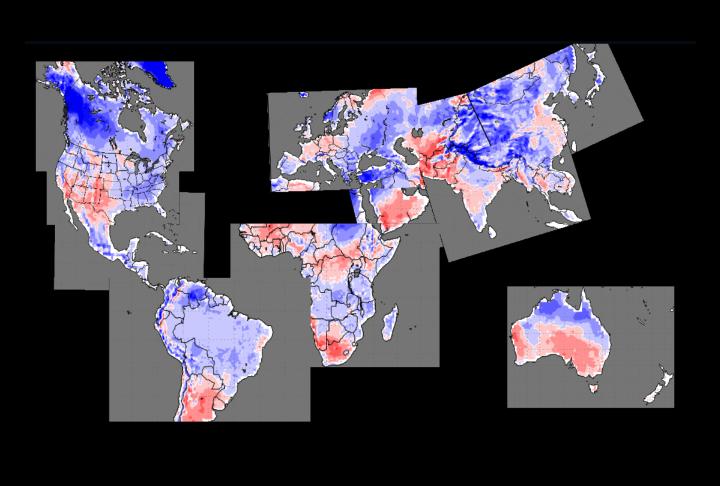After 150 years of unprecedented heating, most of the planet is below CRU climatology. Note the exceptional mildness in the Arctic. Greenland looks wicked hot.
Disrupting the Borg is expensive and time consuming!
Google Search
-
Recent Posts
- New Visitech Features
- Ice-Free Arctic By 2014
- Debt-Free US Treasury Forecast
- Analyzing Big City Crime (Part 2)
- Analyzing Big City Crime
- UK Migration Caused By Global Warming
- Climate Attribution In Greece
- “Brown: ’50 days to save world'”
- The Catastrophic Influence of Bovine Methane Emissions on Extraterrestrial Climate Patterns
- Posting On X
- Seventeen Years Of Fun
- The Importance Of Good Tools
- Temperature Shifts At Blue Hill, MA
- CO2²
- Time Of Observation Bias
- Climate Scamming For Profit
- Climate Scamming For Profit
- Back To The Future
- “records going back to 1961”
- Analyzing Rainfall At Asheville
- Historical Weather Analysis With Visitech
- “American Summers Are Starting to Feel Like Winter”
- Joker And Midnight Toker
- Cheering Crowds
- Understanding Flood Mechanisms
Recent Comments
- Jack the Insider on Ice-Free Arctic By 2014
- Bob G on Ice-Free Arctic By 2014
- Bob G on Ice-Free Arctic By 2014
- conrad ziefle on Ice-Free Arctic By 2014
- conrad ziefle on Ice-Free Arctic By 2014
- conrad ziefle on Ice-Free Arctic By 2014
- John Francis on Ice-Free Arctic By 2014
- John Francis on Ice-Free Arctic By 2014
- Bob G on New Visitech Features
- Jack the Insider on New Visitech Features



Greenland and Nunavet are cold and so is much of the civilized world.
The period of warmcold is over! Now we are simply getting old fashioned coldcold.
http://www.msnbc.msn.com/id/41974114/ns/us_news-environment/
wow why is this report completely different???
Compared to the last 30-year mean, the globe should be about -0.17C below normal during the next 8-days, on average.
http://www.coaps.fsu.edu/~maue/extreme/gfs/current/raw_temp_8day_avg.png
Damn, all that global warming shot to hell in just a few days. I wonder if society will ever lose this obsession of things globally averaged?
The “unprecedented heating” mostly seems to have happened well before the era of so-called “global warming”. Before the ‘Heat Wave of 1936’, we had the ‘Heat Wave of 1892’ – which was more truly global:
From “In the High Heavens” (published 1910), Chapter XII – The Heat Wave of 1892 (pp. 276-293)
‘DURING the course of the summer of 1892 the papers frequently described in sufficiently striking paragraphs the abnormally high temperature which was experienced in many parts of the globe. The first tidings of this nature reached us from America. Thus we read that on the 29th of July the thermometer in the streets of New York had risen to as much as 101° and 102° in the shade. At the meteorological station in that city, where, no doubt, every precaution was adopted to insure accuracy in the record, we find that a temperature of 99° was indicated. The next day July 30 the ascent of the mercury still continued, and we hear that an observation in the Fifth Avenue showed as much as 107° in the shade. This, however, seems to have been the culmination of what had been somewhat absurdly designated “the great heat-wave.” On July 31 the warmth had begun perceptibly to decline, though it was still terribly oppressive. The descriptions received from various parts of the North American continent show that the heat was almost, if not quite, as great in many other places as it was in New York. From north and south, from east and west, we heard of abnormally high thermometers; we were told that in many localities the work in factories had to be discontinued, as the hands could not stand the heat. In some towns business seems to have been temporarily suspended, and the traffic in the streets ceased during the hottest part of the day. It was also reported from many places that heavy losses were experienced by the death of sheep and cattle. Nor was the great heat-wave without a tragic aspect. We read of a large number of cases of sunstroke occurring in various parts of America, many of which terminated fatally.
‘It was about a fortnight or three weeks after the New World had its scorching that the Old “World was visited by the great heat-wave. Up to the beginning of August there does not seem to have been anything unusual in European temperatures; thus, for instance, at Berlin, on August 1, the highest thermometric reading was 72°, and the lowest 61°. Even on the 7th of August, the greatest and least temperatures at Vienna were no more than 70° and 61° respectively, but towards the middle of the month the ascent of the mercury in the thermometer became marked and rapid all over Europe.
‘By the 17th of August, a temperature had been reached at Vienna which seems to have rivalled that attained at New York nineteen days previously. We read that on the following day (18th of August) the thermometers at Vienna showed 107° in the shade; the telegrams declare that the streets are deserted, and considering what the feelings of the reporter must have been who described it, we excuse his exaggeration that the Ringstrass was “like a furnace.”’
Read the rest of it here:
http://openlibrary.org/books/OL7154221M/In_the_high_heavens.
There are options to either download the document (24MB) or “Read online” (page-by-page).
Also, GFS 18z is forecasting a nice patch of -83F over Greenland.
http://www.coaps.fsu.edu/~maue/polar/gfs/current/n_t2m_129.png
A really nice condition for “Sunbathing”. Will they have a bathing suit exhibition there? 😉
little poley bear strings…………………….
You know, I sometimes have the chills when I have a fever… must be that warmcold everyone talks about!
That seems to be missing most of the Russian side of the Arctic.
Andy
The Earth Has A Fever
It needs more cowbell.